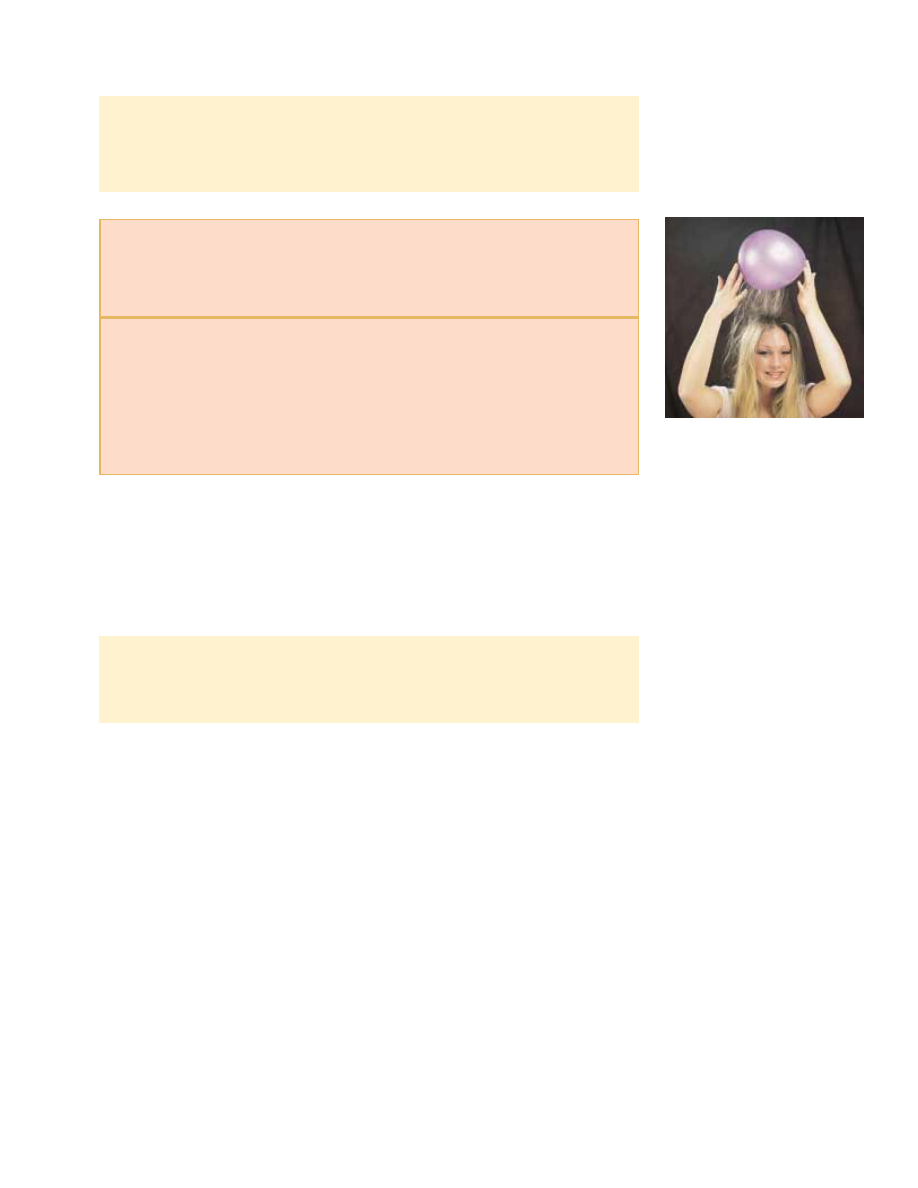Physics For Scientists And Engineers 6E - part 178

23.2 Charging Objects By Induction
It is convenient to classify materials in terms of the ability of electrons to move through
the material:
S E C T I O N 2 3 . 2 • Charging Objects By Induction
709
Quick Quiz 23.1
If you rub an inflated balloon against your hair, the two
materials attract each other, as shown in Figure 23.3. Is the amount of charge present
in the system of the balloon and your hair after rubbing (a) less than, (b) the same as,
or (c) more than the amount of charge present before rubbing?
Quick Quiz 23.2
Three objects are brought close to each other, two at a
time. When objects A and B are brought together, they repel. When objects B and C
are brought together, they also repel. Which of the following are true? (a) Objects A
and C possess charges of the same sign. (b) Objects A and C possess charges of oppo-
site sign. (c) All three of the objects possess charges of the same sign. (d) One of the
objects is neutral. (e) We would need to perform additional experiments to determine
the signs of the charges.
Properties of electric charge
• There are two kinds of charges in nature; charges of opposite sign attract one
another and charges of the same sign repel one another.
• Total charge in an isolated system is conserved.
• Charge is quantized.
Electrical
conductors are materials in which some of the electrons are free
electrons
1
that are not bound to atoms and can move relatively freely through the
material; electrical
insulators are materials in which all electrons are bound to
atoms and cannot move freely through the material.
Figure 23.3 (Quick Quiz 23.1)
Rubbing a balloon against your
hair on a dry day causes the
balloon and your hair to become
charged.
Charles D. Winters
1
A metal atom contains one or more outer electrons, which are weakly bound to the nucleus. When
many atoms combine to form a metal, the so-called free electrons are these outer electrons, which are not
bound to any one atom. These electrons move about the metal in a manner similar to that of gas mole-
cules moving in a container.
Materials such as glass, rubber, and wood fall into the category of electrical insulators.
When such materials are charged by rubbing, only the area rubbed becomes charged,
and the charged particles are unable to move to other regions of the material.
In contrast, materials such as copper, aluminum, and silver are good electrical con-
ductors. When such materials are charged in some small region, the charge readily dis-
tributes itself over the entire surface of the material. If you hold a copper rod in your
hand and rub it with wool or fur, it will not attract a small piece of paper. This might
suggest that a metal cannot be charged. However, if you attach a wooden handle to the
rod and then hold it by that handle as you rub the rod, the rod will remain charged
and attract the piece of paper. The explanation for this is as follows: without the insu-
lating wood, the electric charges produced by rubbing readily move from the copper
through your body, which is also a conductor, and into the Earth. The insulating
wooden handle prevents the flow of charge into your hand.
Semiconductors are a third class of materials, and their electrical properties
are somewhere between those of insulators and those of conductors. Silicon and